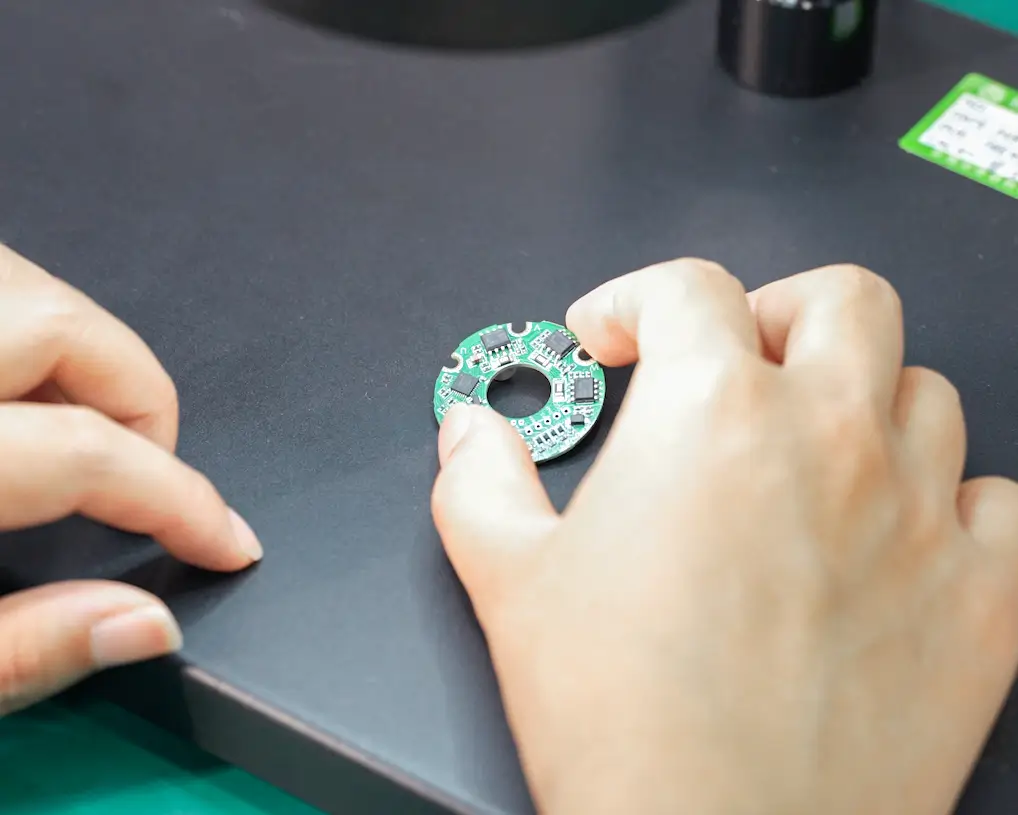The SG90 Servo: Small Size, Big Impact 🚀
If you’ve ever tinkered with robotics, RC cars, or DIY gadgets, chances are you’ve crossed paths with the SG90 9g micro servo motor. This unassuming little device, no larger than a matchbox, has become a cornerstone of modern hobbyist engineering. But what makes it so special? Let’s peel back the layers of its datasheet and explore why this tiny motor punches far above its weight.

Meet the SG90: Specs That Matter
At first glance, the SG90’s specs might seem modest. Weighing just 9 grams and measuring 22mm x 12mm x 29mm, it’s designed for projects where space and weight are critical. But don’t let its size fool you. Here’s what the datasheet reveals:
Torque: 1.8 kgf·cm (4.8V) – enough to lift small objects or adjust lightweight mechanisms. Operating Voltage: 3.5V–6V, making it compatible with most microcontrollers like Arduino and Raspberry Pi. Speed: 0.1s/60° at 4.8V, balancing responsiveness with precision. Gear Material: Nylon or metal options, depending on the variant.
These numbers might not scream “high performance,” but they’re precisely why the SG90 thrives in niche applications. It’s like the Swiss Army knife of micro servos—reliable, adaptable, and surprisingly durable.
Where Does the SG90 Shine?
The SG90’s real magic lies in its versatility. Here’s how makers are putting it to work:
Robotics: From robot arm joints to bipedal leg mechanisms, the SG90’s compact size allows for intricate movements without bulk. RC Models: Drones, planes, and cars use it for steering, flaps, or camera adjustments. Home Automation: Think automatic plant-watering systems or motorized curtains. Creative Hacks: Ever seen a servo-driven Halloween prop or a twitching “haunted” book? Thank the SG90.
One Reddit user shared how they rigged an SG90 to a coffee machine to brew a cup at sunrise—no coding experience required. That’s the beauty of this motor: it democratizes tech creativity.
The Datasheet Decoded: What You Actually Need to Know
Datasheets can feel like deciphering hieroglyphics, but let’s break down the SG90’s key details:
Wiring: Three wires (power, ground, signal). Connect to PWM-capable pins on your controller. Control Signal: A PWM pulse width of 500–2500µs corresponds to 0°–180° rotation. Operating Temperature: -30°C to +60°C. Yes, it’ll survive your backyard in winter.
Pro tip: The metal-gear version (SG90D) handles heavier loads but costs slightly more. For most hobby projects, the standard nylon gears work fine.
Common Pitfalls (And How to Avoid Them)
Even the mighty SG90 has limits. Overloading it beyond its torque rating can strip gears or fry the motor. A common mistake? Using it to lift a 200g camera without gearing down. Solution: Add a lever arm or pulley system to reduce strain.
Voltage is another gotcha. Running it at 6V boosts speed and torque but shortens lifespan. For longevity, stick to 4.8V–5V.
Pushing the SG90 Beyond the Basics 🔧
Now that we’ve covered the fundamentals, let’s dive into advanced hacks, lesser-known applications, and how to squeeze every drop of potential from this micro marvel.
Torque Tricks: Getting More Muscle
Need more oomph? Try these:
Gear Reduction: Pair the SG90 with a 3D-printed gearbox to amplify torque. Parallel Servos: Sync two SG90s to double the lifting power (requires precise calibration). Leverage: Extend the servo arm to create a longer lever, trading speed for force.
One YouTuber modified an SG90 to open a heavy pet door by adding a pulley system—proof that creativity beats raw power.
Precision Control: Coding for Smooth Moves
While the SG90’s default movement is jerky, you can program buttery-smooth sweeps with Arduino or Python. Use libraries like Servo.h or pyServo to implement acceleration curves. Example snippet: ```cpp
include
Servo myservo; void setup() { myservo.attach(9); } void loop() { for (int pos = 0; pos <= 180; pos += 1) { myservo.write(pos); delay(15); // Adjust for speed } } ```
Beyond 180 Degrees: Modding for Continuous Rotation
Wait—the SG90 can’t spin 360°, right? Wrong. By tweaking the feedback potentiometer and removing the physical stop, you can convert it into a continuous rotation motor. Perfect for wheeled robots!
Warning: This voids the warranty and requires soldering skills. But hey, no risk, no reward.
Power Management: Keeping It Alive
Servos are power-hungry. To prevent voltage drops:
Use a separate battery for the servo and microcontroller. Add a capacitor (100µF) across the power lines. Avoid sudden movements; gradual motion draws less current.
The SG90 in Unexpected Places
Art Installations: An artist used 50 SG90s to create a kinetic sculpture that “dances” with the wind. Accessibility Tools: A student built a servo-driven page-turner for individuals with limited mobility. Gardening: Automate greenhouse vents based on temperature sensors.
When to Upgrade (and What to Buy Next)
The SG90 is fantastic, but projects outgrow it. If you need:
More Torque: Try the MG996R (10kgf·cm). Waterproofing: The DS3218PRO survives rain and mud. Silent Operation: The Blue Bird BMS-211DM is nearly noiseless.
Still, for 90% of small-scale projects, the SG90 remains unbeatable.
Final Thoughts: Why the SG90 Endures
In a world obsessed with bigger and faster, the SG90 is a reminder that elegance lies in simplicity. It’s affordable ($2–$5), widely available, and forgiving of beginner mistakes. Whether you’re building a cat toy or a prototype for a startup, this servo proves that great things do come in small packages.
So next time you’re brainstorming a project, ask: “Can an SG90 do this?” The answer might just surprise you. 🔌











































